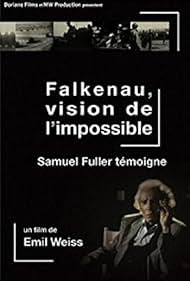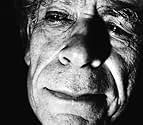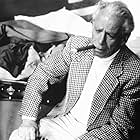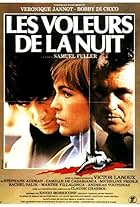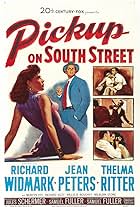Aggiungi una trama nella tua linguaDocumentary stems from 1945, when infantryman Sam Fuller, member of the U.S. Army's "Big Red One," helped liberate the Nazis' Falkenau death camp. Fuller shot footage of his commanding offic... Leggi tuttoDocumentary stems from 1945, when infantryman Sam Fuller, member of the U.S. Army's "Big Red One," helped liberate the Nazis' Falkenau death camp. Fuller shot footage of his commanding officer's marching Czech locals, who denied knowing of the genocide, out from town to view the ... Leggi tuttoDocumentary stems from 1945, when infantryman Sam Fuller, member of the U.S. Army's "Big Red One," helped liberate the Nazis' Falkenau death camp. Fuller shot footage of his commanding officer's marching Czech locals, who denied knowing of the genocide, out from town to view the horrors of the death house. 40 years later, French documentary filmmaker Emil Weiss brough... Leggi tutto
- Regia
- Sceneggiatura
- Star
Foto
Trama
Lo sapevi?
- ConnessioniEdited from V-E +1 (1945)
It's a powerful story and, thanks to Fuller's 21 minutes of silent film footage, and the film constructed around it, FALKENAU THE IMPOSSIBLE (1988), we get to see the documentary evidence of it, the first time this footage was shown to anybody. We see the entire 21 minutes, preceded by Fuller giving us a guided tour on the site of the remains of the camp and showing us how he and his fellow G.I.'s carried out the combat action necessary to take the camp from the Germans. Then, as the film unspools, Fuller provides a running narration, identifying the key players for us and offering up choice words to describe Holocaust deniers. This takes up the first 33 minutes of the 54-minute film.
The second section of the film was shot at Nuremberg and the site of the Nuremberg trials. Fuller regrets not having stayed in Europe to cover the trials, but he tours the courtroom and offers a second-hand account of what happened, with stock footage of Nazi rallies at Nuremberg and inmates at the death camps, followed by silent footage of the Nuremberg trials, showing us what Fuller is describing as Goering and other leading Nazis were put on trial as war criminals.
The third section of the film, starting at the 43-minute mark, shows us Fuller and the filmmaker, Emil Weiss, discussing the power of film to illuminate a historical moment and tell an audience what happened. Fuller seems to think that a fiction story, incorporating documentary footage, is the best way to do this. He closes by offering a brief overview of the kind of film he'd like to make about the camps and its historical value to future audiences. It gets a little abstract in this section and Fuller's idealism gets the better of him. While I think his approach is sound and is borne out by his own film about the war, THE BIG RED ONE, I'm not so sure that a well-made historical film will necessarily influence people's thinking and behavior. How many people will ever see FALKENAU THE IMPOSSIBLE or even THE BIG RED ONE, for that matter? Jean Renoir made his anti-war classic, GRAND ILLUSION, in 1937 and drew worldwide acclaim, yet WWII proceeded right on schedule. The only filmed dramatization of a true story about the Holocaust to have any kind of an impact on a mass audience so far is Steven Spielberg's SCHINDLER'S LIST (1993), which offered a very specific instance of a group of people who survived due to the extraordinary efforts of one man, certainly an atypical story about the Holocaust. In his book, Fuller mentions SCHINDLER in passing and calls the film "brilliant." However, as recounted in a New Yorker interview, Stanley Kubrick famously declared it a film not about the Holocaust, but "about success."
In any event, Fuller is quite a larger-than-life character, never without a cigar, and speaks in vivid, blunt, dramatic terms, as befitting his background as a pulp fiction writer, crime reporter, and low-budget filmmaker. I recently watched THE BIG RED ONE: THE RECONSTRUCTION, a semi-restored 162-minute version released in 2004, and I have to say that it's probably Fuller's crowning achievement. It's a tough job to convey in a fiction film the experience of war as felt by the men on the ground and Fuller's film does it as well as any war film I've seen. FALKENAU THE IMPOSSIBLE makes an excellent supplement and I only wish it had been included on the DVD of THE BIG RED ONE as an extra. Instead, I had to dig out a VHS copy of a broadcast that I'd recorded from a public television showing 21 years ago. A few brief clips from THE BIG RED ONE are used in this film.
- BrianDanaCamp
- 27 dic 2011
- Permalink
I più visti
Dettagli
- Data di uscita
- Paese di origine
- Lingue
- Celebre anche come
- Falkenau - Das Undenkbare
- Luoghi delle riprese
- Azienda produttrice
- Vedi altri crediti dell’azienda su IMDbPro
- Tempo di esecuzione52 minuti
- Colore
- Mix di suoni
Contribuisci a questa pagina

